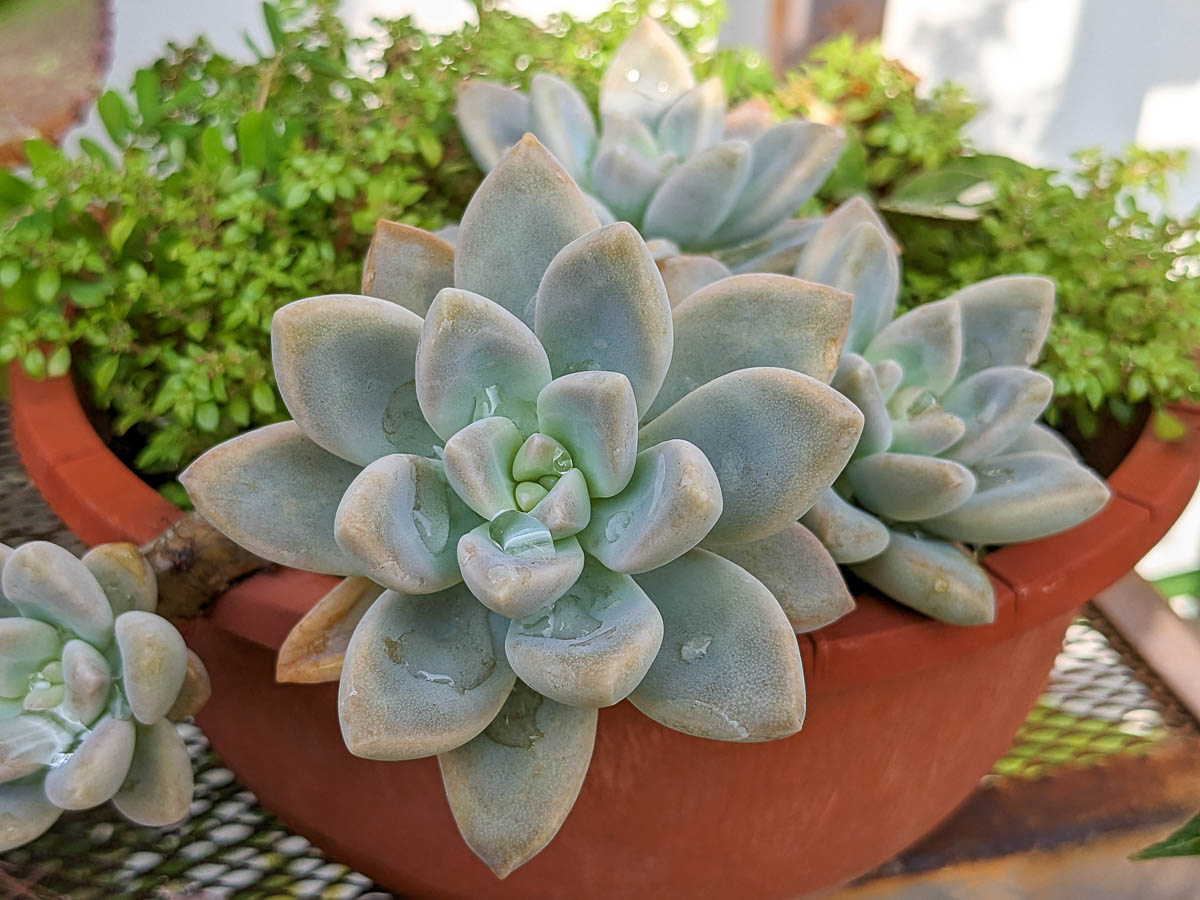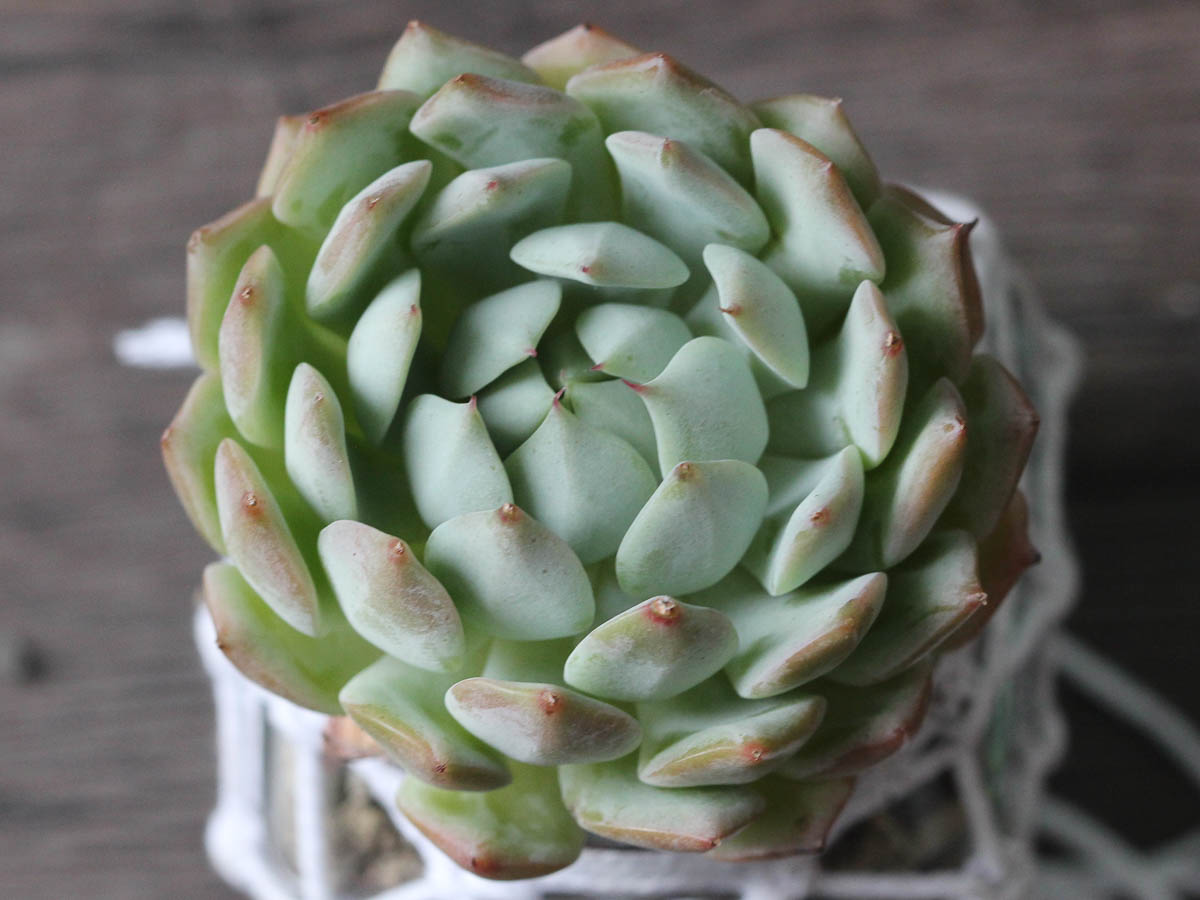Mexican Hen and Chicks
Mexican Hen-and-Chicks (Echeveria spp. and cultivars)

Mexican Hen-and-Chicks plants grow as a short rosettes up to 15cm across, with larger plants growing smaller plants along the margin, resembling how chicks will cluster around a mother hen.
A perennial succulent, this plant is great to grow in containers or as a center piece or a part in a succulent dish arrangement. This genus has many species and cultivars, each with their unique leaf shape and colours. These plants require more care in the tropics as they do not do well with humidity, and will need care with watering to prevent rot.
Sun and soil needs:

Mexican Hen and Chicks thrives in gardens with 4-8 hours of indirect sunlight, or 4-6 hours of direct sunlight. More hours of direct sunlight may cause sunburn.
Plants do best in pots with sandy soil at least 5cm deep. This plant is very vulnerable to root rot and will need plenty of inorganic soil amendments and good drainage to keep the soil well-aerated.
Growing:
Mexican Hen and Chicks are more difficult to grow in Singapore as they thrive in drier climates. It is best to grow them in a shallow pot with well-draining, gritty soil. Allow the soil to dry out completely before watering deeply. Water directly into the soil, and avoid wetting the leaves. The leaves can be protected by covering the soil with a layer of inorganic mulch, or by bottom watering the plant. Dried, rotting or damaged leaves need to be removed as soon as possible to prevent rot from spreading.
Propagation:
Mexican Hen and Chicks can be grown from stem and leaf cuttings rooted directly into soil.
Common problems & solutions:
This plant is susceptible to root rot if grown in waterlogged soil. To prevent rot, grow the plant in sandy soil with plenty of inorganic soil amendments. Plants can also be bottom watered once a week or less to keep the soil airy.
Mealy Bugs often infest the plant if it has underlying problems like root rot. Mechanical pest control methods like pruning the infested parts are the best methods for managing these pests in the short term, but resolving the underlying problem will prevent them in the long term.

